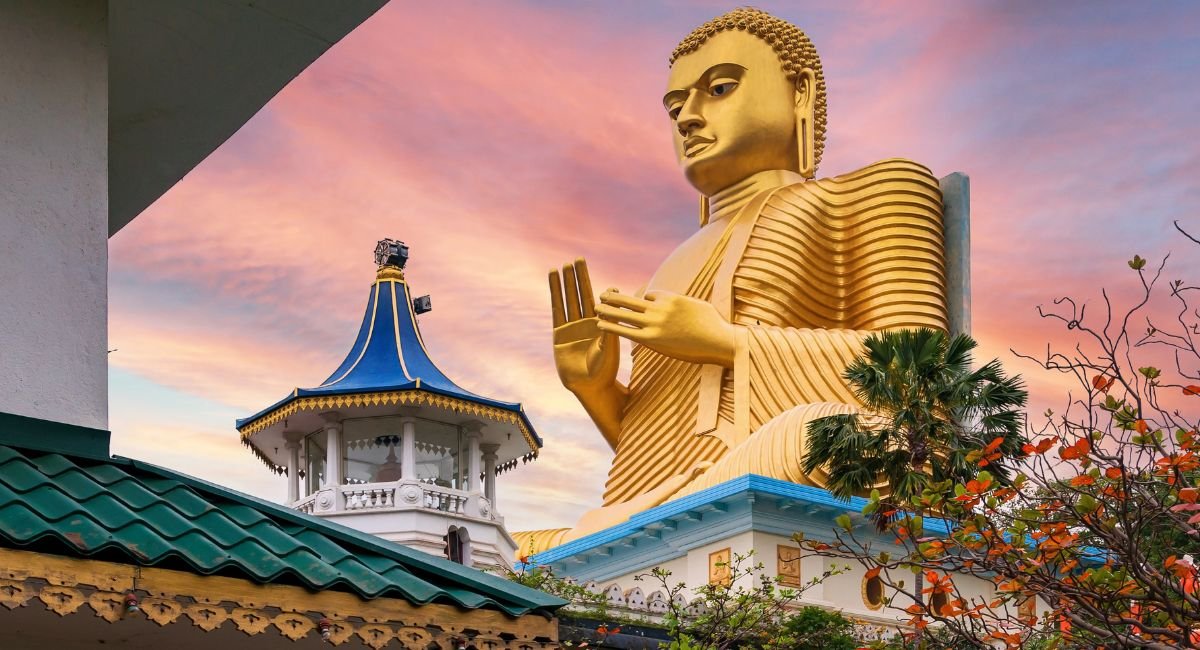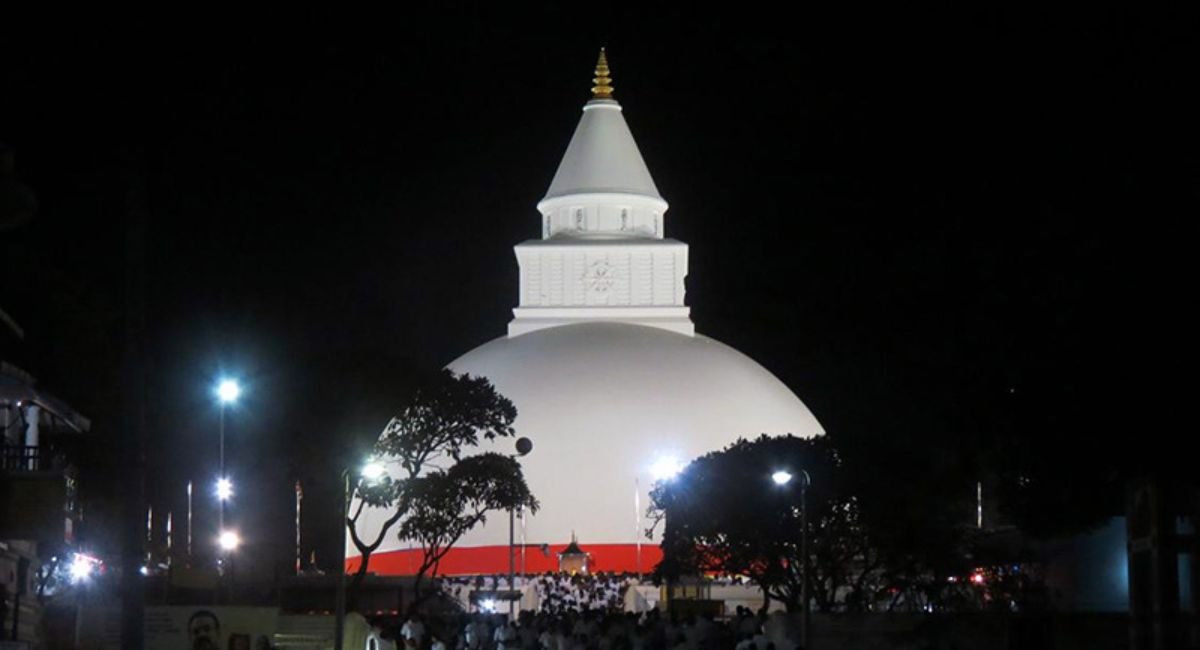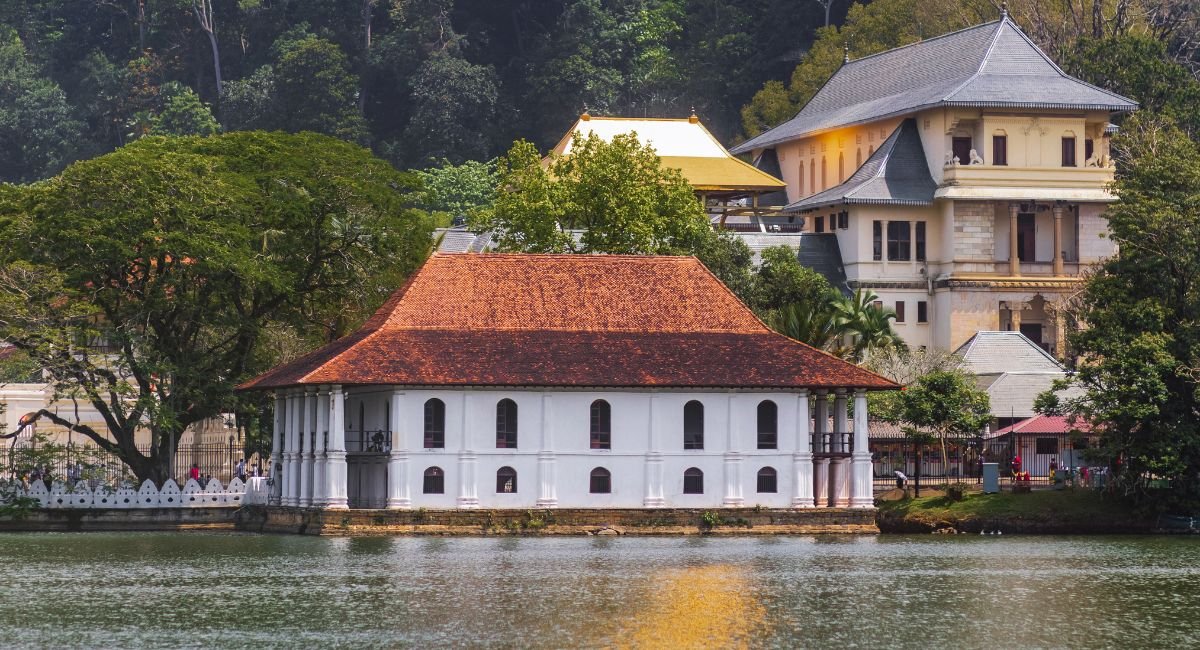Located in the heart of Central Sri Lanka, the Dambulla Cave Temple (also known as the Golden Temple of Dambulla) stands as one of the most significant and well-preserved cave temple complexes in Sri Lanka. A UNESCO World Heritage Site, this temple offers a fascinating glimpse into the country’s ancient Buddhist heritage, with its intricate murals, statues, and spiritual history. Whether you’re a history buff, a spiritual seeker, or a traveler interested in unique cultural experiences, the Dambulla Cave Temple should be on your list of must-visit places.
Location and Province
- Location: Dambulla, Central Sri Lanka
- Province: North Central Province
- Coordinates: 7.8640° N, 80.6484° E
The Dambulla Cave Temple is nestled in the Dambulla Rock, located approximately 148 km (around 92 miles) from Colombo and 72 km from Kandy. The site is situated within the ancient cultural triangle of Sri Lanka, an area rich in archaeological and historical landmarks.
How to Reach the Dambulla Cave Temple
Reaching Dambulla is relatively easy, with several transportation options available:
By Road:
- From Colombo: The most common way to reach Dambulla is by car or bus, with a drive time of approximately 3 to 4 hours. The journey is scenic, passing through villages and towns, and is a pleasant experience if you’re traveling by private car.
- From Kandy: Dambulla is about a 2-hour drive from Kandy, making it an easy day trip from the hill capital of Sri Lanka.
By Train:
- From Colombo: You can take a train from Colombo to Habarana or Kandy and then take a taxi or tuk-tuk to Dambulla, which is about 20 minutes away by road from Habarana station.
By Air:
- The nearest domestic airport to Dambulla is Sigiriya Airport, which is about 30 minutes away by road. However, most international travelers arrive at Bandaranaike International Airport (Colombo) and proceed to Dambulla via road.
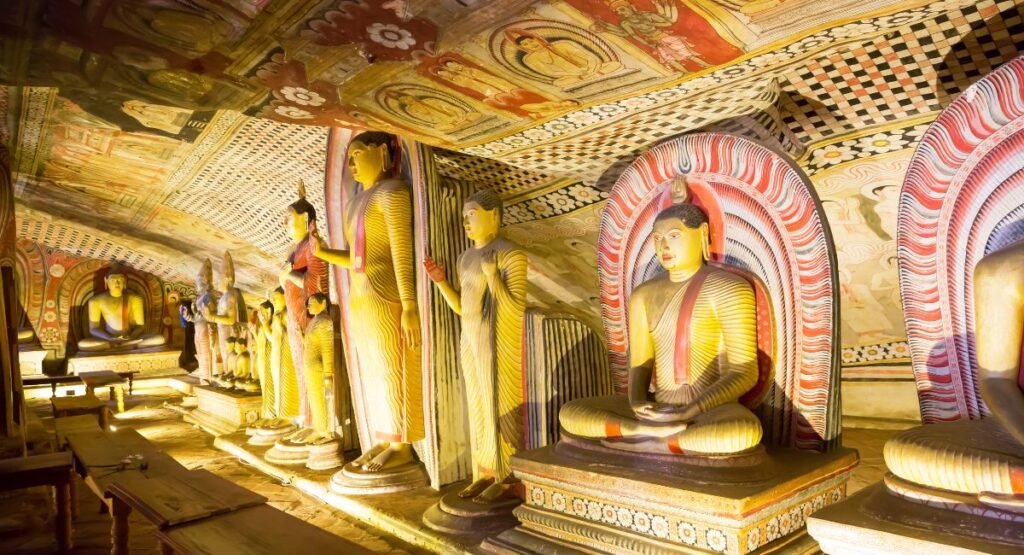
Tour Activities at Dambulla Cave Temple
The Dambulla Cave Temple offers a unique experience with its combination of historical, spiritual, and natural beauty. Here are some activities that visitors can enjoy at the site:
1. Exploring the Cave Temples:
The complex consists of five caves, each filled with stunning murals and statues that reflect the deep Buddhist cultural heritage. The caves are carved into the rock face of a 160-meter (525-foot) high granite hill. Visitors can explore the 1st-century BC murals that adorn the walls and ceilings, which depict key moments from the life of Buddha.
The caves also contain over 150 statues of Buddha, along with images of Sri Lankan kings, gods, and religious symbols. The largest of the caves, known as the Maha Alut Viharaya, features a massive reclining Buddha statue that is over 14 meters long.
2. Climbing the Rock:
Visitors will need to climb a series of steps, approximately 365 in total, to reach the cave complex. Along the way, you’ll pass through scenic gardens and a small Buddhist shrine. The climb is not too strenuous but can be a little challenging in the heat, so it’s advisable to carry water and wear comfortable shoes.
3. Admiring the Views:
Once you reach the top of the rock, you are rewarded with panoramic views of the surrounding countryside. You can take in the vast stretches of tropical greenery, distant mountains, and the city of Dambulla. The temple’s location offers stunning vistas, especially during sunrise and sunset.
4. Exploring the Golden Temple:
At the base of the rock, you will find the Golden Temple—an iconic modern addition to the site. The temple features a large golden statue of Buddha at the entrance, along with vibrant new murals and sculptures. It is a perfect spot for photography and provides a striking contrast to the ancient caves.
5. Photography and Scenic Walks:
The Dambulla Cave Temple area is surrounded by lush greenery, making it an ideal spot for scenic photography and leisurely walks. The region is peaceful and serene, making it a great place to reflect or meditate amidst nature.
6. Visit the Archaeological Museum:
Nearby, you will find the Dambulla Archaeological Museum, where you can learn more about the history of the cave temple, its significance, and the archaeological discoveries made in the area. The museum is home to a collection of artifacts, tools, and stone carvings that showcase Sri Lanka’s rich cultural and religious history.
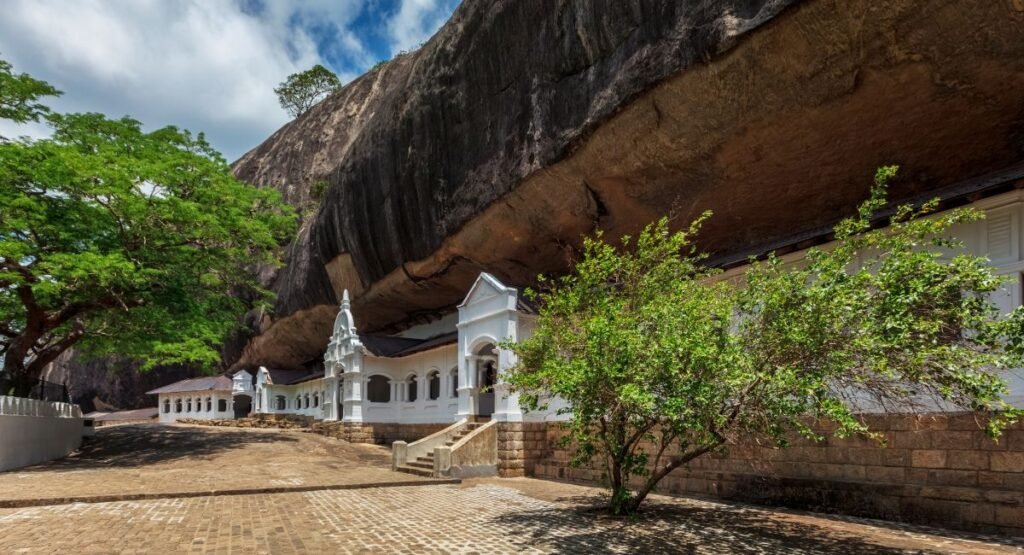
Why Visit the Dambulla Cave Temple?
1. UNESCO World Heritage Status:
The Dambulla Cave Temple is one of Sri Lanka’s seven UNESCO World Heritage Sites and a place of immense cultural, religious, and historical importance. It is the largest and best-preserved cave temple complex in Sri Lanka and a must-see for history lovers and spiritual seekers alike.
2. Ancient Buddhist Art:
The murals and statues inside the caves are priceless examples of ancient Sri Lankan Buddhist art. The murals, many of which were painted for 2,000 years, are intricate depictions of the life of Buddha and various important figures in Buddhist lore. These artworks provide a rare and beautiful insight into ancient Sri Lankan religious and artistic traditions.
3. Spiritual and Religious Significance:
Dambulla has long been a pilgrimage site for Buddhists. Monks have continuously used the caves for meditation, and the location remains an active place of worship. Visitors often feel a sense of tranquility and reverence as they explore the caves, making it an ideal destination for those seeking spiritual reflection.
4. Scenic and Historical Experience:
Aside from the temples, the cave complex’s location on top of a rock offers a breathtaking panoramic view of the surrounding area, including the Matale Hills and the town of Dambulla. The combination of historical significance, scenic beauty, and religious atmosphere makes it an unforgettable experience.
5. Accessibility and Convenience:
Dambulla is easily accessible from major tourist hubs like Colombo, Kandy, and Sigiriya, making it a convenient stop during a cultural tour of Sri Lanka. It is also one of the primary attractions in the Cultural Triangle, alongside Sigiriya, Anuradhapura, and Polonnaruwa.
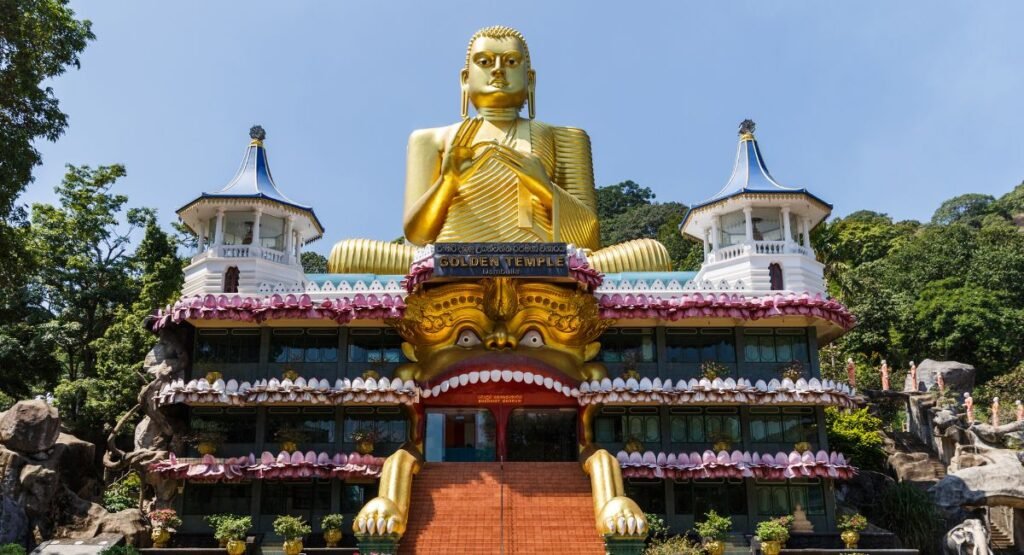
Practical Tips for Visiting the Dambulla Cave Temple
- Best Time to Visit: The ideal time to visit is during the cooler months (from November to April) to avoid the heat and humidity. Early morning visits are recommended to avoid crowds and enjoy the sunrise views.
- Dress Code: As it is a sacred site, visitors should dress modestly, covering shoulders and knees. It is customary to remove shoes before entering the temple.
- Ticket Information: Foreign and local visitors have a small entrance fee. The ticket includes access to both the cave temples and the Golden Temple.
- Guides: Hiring a local guide can enrich your experience as they can provide detailed insights into the history and significance of the murals, statues, and the cave complex.
Conclusion
The Dambulla Cave Temple is a testament to Sri Lanka’s rich Buddhist heritage and offers a profound spiritual and historical experience. Whether you are a history enthusiast, an art lover, or someone seeking spiritual serenity, the temple complex will captivate you with its ancient beauty, serene surroundings, and impressive collection of Buddhist art. As one of the most iconic landmarks in Sri Lanka, it is a must-visit destination that reflects the island’s cultural and religious identity.
Best Tours near Dambulla
Discover the best tours in Sri Lanka, where every journey unveils a new wonder. Explore ancient ruins, lush tea plantations, golden beaches, and vibrant wildlife. Experience the magic of this tropical paradise like never before!
Best Hotels near Dambulla
Experience luxury and comfort at the best hotels in Sri Lanka. From serene beachfront resorts to charming hill-country retreats, enjoy world-class hospitality, stunning views, and unforgettable stays tailored to your every need.


